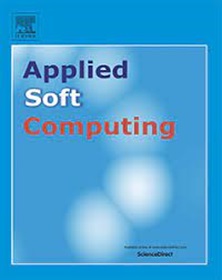Novel imbalanced multi-class fault diagnosis method using transfer learning and oversampling strategies-based multi-layer support vector machines (ML-SVMs)
IF 7.2
1区 计算机科学
Q1 COMPUTER SCIENCE, ARTIFICIAL INTELLIGENCE
引用次数: 0
Abstract
For health monitoring and fault diagnosis of critical mechanical system components, historical data related to equipment failures are often limited and exhibit varying imbalanced multi-class characteristics (e.g., with noisy and time-series data). Moreover, fault diagnosis frameworks based on traditional resampling algorithms (e.g., SMOTE) mostly heavily rely on manual feature extraction, making them difficult to adapt to diverse working conditions or objects. To address these challenges, we propose a novel end-to-end imbalanced multi-class fault diagnosis architecture using transfer learning and oversampling strategies-based multi-layer support vector machines (ML-SVMs). ML-SVMs utilize a VGG-based deep migration feature extraction method to extract features from original time-domain vibration signals, employing natural source domain weights to reduce dependence on human experience and sample size. Then, ML-SVMs introduce ISCOTE (i.e., the first and second layers of ML-SVMs), an improved version of the sample-characteristic over-sampling technique (SCOTE). ISCOTE generates more effective and reasonable samples for each fault class through a scaling factor and iterative optimization mechanism, whether in noisy feature spaces with fuzzy boundaries or in clear boundary feature spaces. Finally, in the third layer of ML-SVMs, multi-class SVMs (e.g., LS-SVMs and standard SVMs) are utilized to train balanced feature samples and derive classification models with strong generalization ability. The effectiveness of ML-SVMs is demonstrated through 16 fault diagnosis instances using CWRU and IMS bearing data, PHM 2010 and TTWD tool wear data. Results indicate that ML-SVMs outperform 8 well-known oversampling-based algorithms in fault diagnosis recognition rates and algorithm robustness. It has offered a feasible architecture for multi-class imbalanced fault scenarios with limited data and multiple adverse features.
使用基于迁移学习和超采样策略的多层支持向量机 (ML-SVM) 的新型不平衡多类故障诊断方法
对于关键机械系统组件的健康监测和故障诊断而言,与设备故障相关的历史数据往往有限,且呈现出不同的不平衡多类特征(如噪声数据和时间序列数据)。此外,基于传统重采样算法的故障诊断框架(如 SMOTE)在很大程度上依赖于人工特征提取,很难适应不同的工作条件或对象。为了应对这些挑战,我们提出了一种新颖的端到端不平衡多类故障诊断架构,该架构采用基于迁移学习和超采样策略的多层支持向量机(ML-SVM)。ML-SVM 利用基于 VGG 的深度迁移特征提取方法,从原始时域振动信号中提取特征,并采用自然源域权重以减少对人类经验和样本大小的依赖。然后,ML-SVM 引入了 ISCOTE(即 ML-SVM 的第一层和第二层),它是样本特征超采样技术(SCOTE)的改进版本。无论是在边界模糊的噪声特征空间,还是在边界清晰的特征空间,ISCOTE 都能通过缩放因子和迭代优化机制为每个故障类别生成更有效、更合理的样本。最后,在 ML-SVM 的第三层,利用多类 SVM(如 LS-SVM 和标准 SVM)来训练均衡的特征样本,并得出具有较强泛化能力的分类模型。利用 CWRU 和 IMS 轴承数据、PHM 2010 和 TTWD 工具磨损数据,通过 16 个故障诊断实例证明了 ML-SVM 的有效性。结果表明,ML-SVM 在故障诊断识别率和算法鲁棒性方面优于 8 种著名的基于超采样的算法。它为具有有限数据和多种不利特征的多类不平衡故障场景提供了一种可行的架构。
本文章由计算机程序翻译,如有差异,请以英文原文为准。
求助全文
约1分钟内获得全文
求助全文
来源期刊

Applied Soft Computing
工程技术-计算机:跨学科应用
CiteScore
15.80
自引率
6.90%
发文量
874
审稿时长
10.9 months
期刊介绍:
Applied Soft Computing is an international journal promoting an integrated view of soft computing to solve real life problems.The focus is to publish the highest quality research in application and convergence of the areas of Fuzzy Logic, Neural Networks, Evolutionary Computing, Rough Sets and other similar techniques to address real world complexities.
Applied Soft Computing is a rolling publication: articles are published as soon as the editor-in-chief has accepted them. Therefore, the web site will continuously be updated with new articles and the publication time will be short.
 求助内容:
求助内容: 应助结果提醒方式:
应助结果提醒方式:


